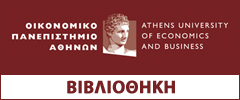| Περίληψη : | Electricity is a secondary commodity of the energy industry, produced by renewable and non renewable sources. The electric power system transfers electricity from the power plants to the consumers via a network. The physical functions are generation, transmission, distribution and system operation, whereas the merchant functions are wholesaling and retailing. The vertical integrated models resulted in a monopoly, reluctant to innovation and cost minimization due to lack of incentive, where utilities accumulated debts, reported annual losses and delays in infrastructure investments. In addition, advances in technology, like the gas turbine and the more efficient transmission systems, lifted some of the causation for a vertical integrated model. The problems were apparent and the first steps in Europe for market liberalization and deregulation emerged in the early 1980s, until European Union issues the first directive for full liberalization in 2001. After deregulating and unbundling the market, there is a need for a new market design. A good market design is the one that produces cost minimizing prices and sends the right signals to the investors. Competition can solve the regulator‘s problem and the key is obviously the transfer of risk from customers to firms, but the formulation of a competitive market is a very difficult task, which requires central governance and independent system operators, where the common target is to protect the customers‘ interests. In support of competition, the demand side should have many responsive buyers, use of contracts and hourly metering, to stabilize the price and increase the system‘s reliability. On the other hand, the supply side should include many responsive sellers and a framework to avoid market power abuse, like the expansion of transmission, use of contracts and ancillary services. The world gross electricity production increases at an annual average growth rate of 3.4% since 1974. Currently there is a wide range of generating technologies, applied or emerging, which vary in factors that should be considered in order to compare. The metric that provides a benchmark for comparing different electricity generating technologies, from an economic point of view, is the concept of the Levelized Cost of Electricity, while, by the use of Lifecycle Assessment, the emission intensity of electricity production can be used as a measure to compare the Greenhouse Gas emissions. The European Union's energy policies are driven by three main objectives: to secure energy supplies, to ensure a competitive environment and to have sustainable energy consumption, through the lowering of greenhouse gas emissions, pollution, and fossil fuel dependence. To pursue these goals within a coherent long-term strategy, the European Union has formulated targets for 2020, 2030, and 2050, with the, so far, necessary regulatory and legislative support. The 2050 Energy Roadmap states that the European Union‘s goal is to reduce its emissions by 80% in 2050, as compared to 1990. It is obvious that the energy sector will have to go through fundamental transformation to achieve this goal. Energy Transition is the set of policies and structural changes aimed at decarbonising the economy. But within the European Union, each country differs with respect to energy mix, availability of natural resources, public acceptance, political support and the stage of transition that they are at, which means that there is no unique solution. Today, the Greek electricity market is undergoing fundamental reforms. New advanced energy technologies and perpetual environmental issues, requirements arising from European and international cooperation, as well as various intergovernmental Agreements, are factors shaping and harmonizing the institutional and legislative framework of the Greek electricity market with current tendencies and perceptions. These reforms shaped the industry of today, where the Ministry of Environment and Energy has the responsibility for the definition and implementation of the national energy policy. The Regulatory Authority for Energy is an independent administrative authority, with financial and administrative independence. The Operator of the electricity Market was established to apply the rules of operation for the electricity market, while the Independent Power Transmission Operator was established in compliance with the European Union Directive 2009/72/EC regarding the legal and functional unbundling of the Transmission and Distribution functions. Electricity generation in Greece is mainly located to North-Western Greece, due to the proximity to lignite deposits. Until 2012, lignite‘s contribution to total electricity generation was over 50%. Although the use of lignite is declining in recent years, it is expected to continue entering the energy mix in order to reduce energy dependence from imported fuels. According to Directive 2009/72/EC, the concentration of the electricity markets across EU should be reduced, so after the successful unbundling, Law 4273/2014 was focusing on the market share of Public Power Corporation, by bringing forward the ―Small PPC‖ plan. The latter law was repealed by Law 4336/2015, which introduced the NOME auctions to the Greek electricity market. Today, after two NOME auctions, PPC‘s market share is around 90%, so the intermediate target for 2016 is lost, as it was 87%. Concerns over failure of reducing the PPC‘s market share, raise the possibility of implementing a type of ―Small PPC‖ plan in parallel with NOME auctions, or some other equivalent measure. In the foreseeable future, it will be decided whether such extra measures are needed.
|
|---|







 Copyright © 2013 Βιβλιοθήκη Ο.Π.Α. Με την επιφύλαξη παντός δικαιώματος.
Copyright © 2013 Βιβλιοθήκη Ο.Π.Α. Με την επιφύλαξη παντός δικαιώματος.